Jumatatu, Aprili 29, 2024
 Jinsi ya kugundua kama Whatsapp yako imedukuliwa
Jinsi ya kugundua kama Whatsapp yako imedukuliwa Tanzania kuunga mkono upatikanaji amani Somalia
Tanzania kuunga mkono upatikanaji amani Somalia Rais Samia:Tuna kila sababu ya kujivunia Muungano wetu
Rais Samia:Tuna kila sababu ya kujivunia Muungano wetu Matumizi ya vyandarua badobado Tanzania
Matumizi ya vyandarua badobado Tanzania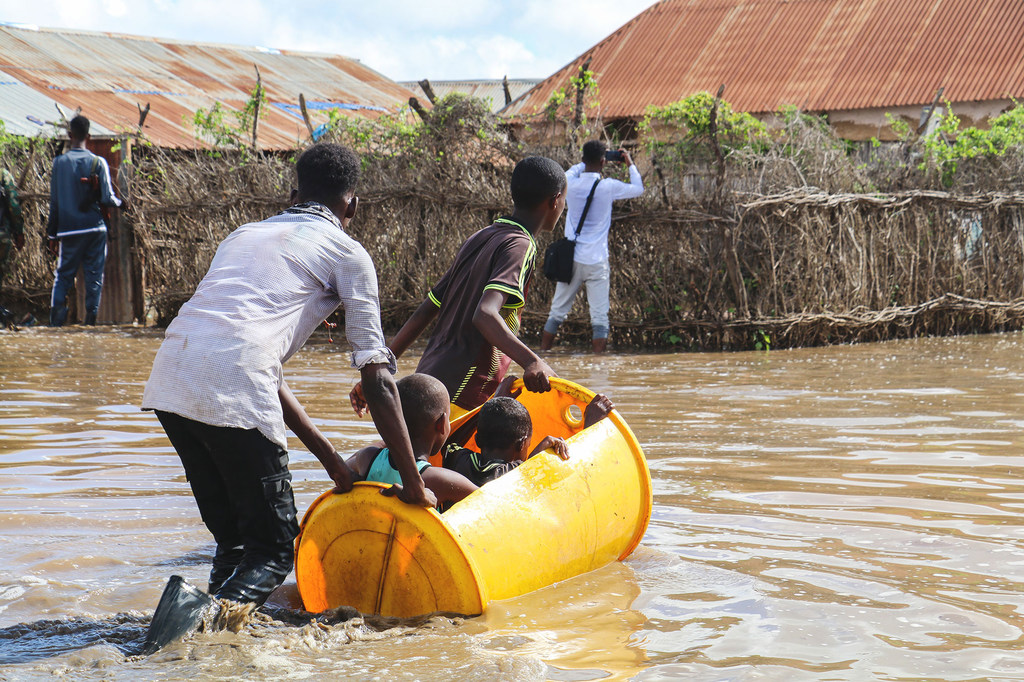 Vifo vinavyotokana na mafuriko vyafikia 155, kaya 51,000 zikiathirika
Vifo vinavyotokana na mafuriko vyafikia 155, kaya 51,000 zikiathirika Ripoti: Afya ya akili chanzo cha watu kujiua, kuua Tanzania
Ripoti: Afya ya akili chanzo cha watu kujiua, kuua Tanzania
Restoration of Lake Manyara Tilapia remains an uphill duty
- Scientists and local and international conservationists have sounded the alarm that the Lake Manyara tilapia population is fading due to overfishing and pollution.
Afia Mameda, who has fished tilapia from Lake Manyara for more than ten years, remembers when he could walk into the lake from the beach and picked up the marine snails from the lakebed.
But in recent years, Mameda and other tilapia fishers have to go farther and farther from shore - sometimes as far as 10 kilometers to find the fish that Tanzanians eat fried, stewed, smoked, and raw, which is also a pillar of the nation's economy and tourism industry.
Scientists and local and international conservationists have sounded the alarm that the Lake Manyara tilapia population is fading due to overfishing and pollution.
"When I was a youth, we never had to go that far to get tilapia," says Mameda, adding, "Without tilapia, what are we supposed to do?"
Mameda, a father of four, currently is not financially stable and has to engage in farming activities to make ends meet for his family.
The fish (Oreochromis amphimelas) is endemic to four soda lakes: Manyara, Kitangiri, Eyasi, and Singida, which cover less than 5,000 square kilometers.
The lakes form a chain of soda lakes in the eastern arm of the East African Rift Valley in northern Tanzania.
According to the United States National Center for Biotechnology Information, endemic species occur naturally and exclusively and are highly adapted to a specific geographic or small restricted area.
The more of these characteristics these species display, the more vulnerable they are to extinction.
Endemic species should be carefully monitored and managed, and their conservation should be considered a global priority.
Stocks of Manyara tilapias have plummeted to alarmingly low levels in recent decades due to unsustainable fishing.
The International Union for Conservation of Nature (IUCN) Red List of Threatened Species Report 2006 shows that the area of occurrence of the fish, which previously accounted for 73.6% of the total catch in the region, has shrunk from 5,000 km2 to 1800 km2 in recent decades.
As a result, the fish is now listed as an endangered species by the IUCN because of driving forces, including overfishing and pollution.
The fish can only be found in the soda lakes of north-central Tanzania: Lakes Manyara, Kitangiri, Singida, Kindai, and Sulunga.
Researchers argue that 20 years have passed since the last estimation of fish caught from Lake Manyara. The current stock of Tilapia in the lake is unknown.
The lake's proximity to villages, including Barabarani, Migombani, Majengo, and Oltukai, has led to an overdependence on its resources, with many locals relying on fishing for daily sustenance.
Using illegal nets to maximize catches has further exacerbated the problem, significantly reducing fish populations and shifting towards smaller-sized fish.
"Fishermen have been more than the lake's capacity," says Baraka Ole Laltaika, a fisherman at Oltukai village in the Manyara region.
Based on the United Nations Food and Agriculture Organisation (FAO) assessment, the fraction of fishery stocks globally within biologically sustainable levels decreased to 64.6 percent in 2019, 1.2 percent lower than in 2017.
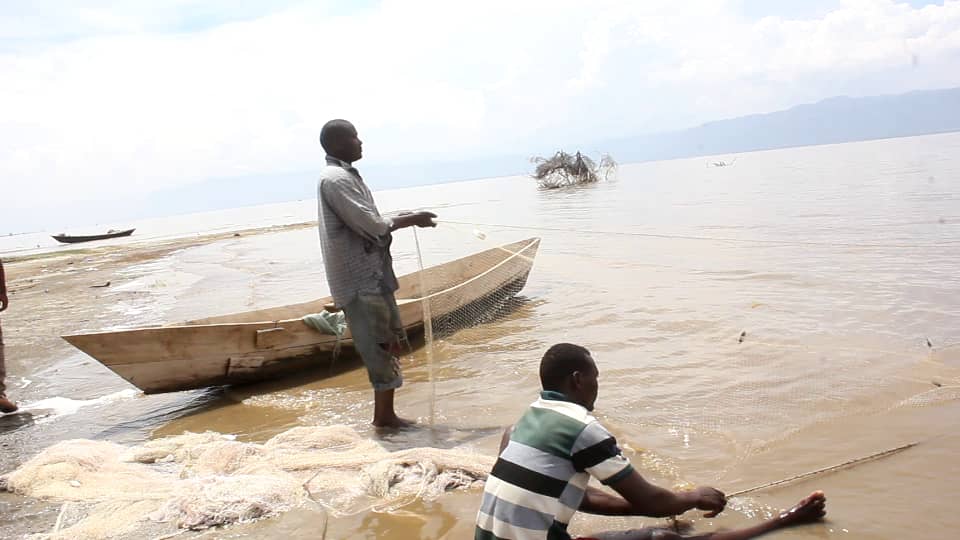 Afia Mameda (standing), a fisherman at Lake Manyara pulling nets from the lake. Mameda says they don't find many fish in the lake due to climate change. Photo: Daniel Samson.
Afia Mameda (standing), a fisherman at Lake Manyara pulling nets from the lake. Mameda says they don't find many fish in the lake due to climate change. Photo: Daniel Samson.
What scientists say
In addition to overfishing, some scientists list pollution from agriculture around Lake Manyara as one of the most important drivers of the lake's physical-chemical properties of water and fish habitat. This, they say, remains a serious threat to the sustainability of fisheries production.
Agricultural pesticide use is critical to fostering crop productivity, but extensive use often has undesired and far-reaching effects on adjacent freshwater ecosystems.
Various pesticides enter the natural environment through multiple mechanisms, including runoff and wind drift.
"The deterioration of the habitat causes effects on fishermen's livelihood due to low catch per unit effort with approximately 35 kilograms of Manyara tilapia per day as recorded during field sampling," explains Dr. Faith Mpondo, a biodiversity researcher at the University of Dodoma in Tanzania.
In early 2023, Dr Mpondo and co-researchers conducted research, namely "Towards Biodiversity "No Net Loss"; Conservation of endangered Manyara Tilapia (Oreochromis amphimelas) and its ecological habitat in Lake Manyara, Tanzania."
She says that more than 40 types of pesticides are used in vegetable agriculture, contributing to lake pollution.
The ecological health of Lake Manyara, the seventh-largest lake of Tanzania by surface area, is also under threat due to the deterioration of water quality.
The lake water is also very muddy and shallow, with high levels of nitrates and dissolved phosphates, the research describes.
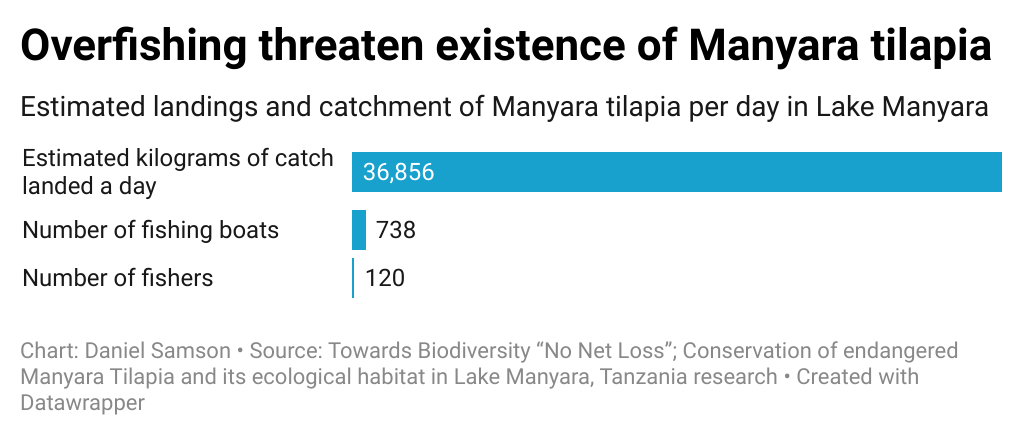
Farming to survive
Overgrazing around the lake and poor cultivation practices involving clearing vegetation cover around the riparian zone of rivers pouring into Lake Manyara have caused soil erosion and subsequent sedimentation into the lake.
Farmers and villagers around Lake Manyara, which is 230 square kilometers, say the decrease in annual rain has forced them to use more pesticides and fertilizers to get crops.
"Climate change is affecting our agricultural practices, and we're seeing more runoff of fertilizers and pesticides into the lake," acknowledged Mariam John, a farmer living near Lake Manyara, adding that collaborative efforts may rescue the lake and habitats.
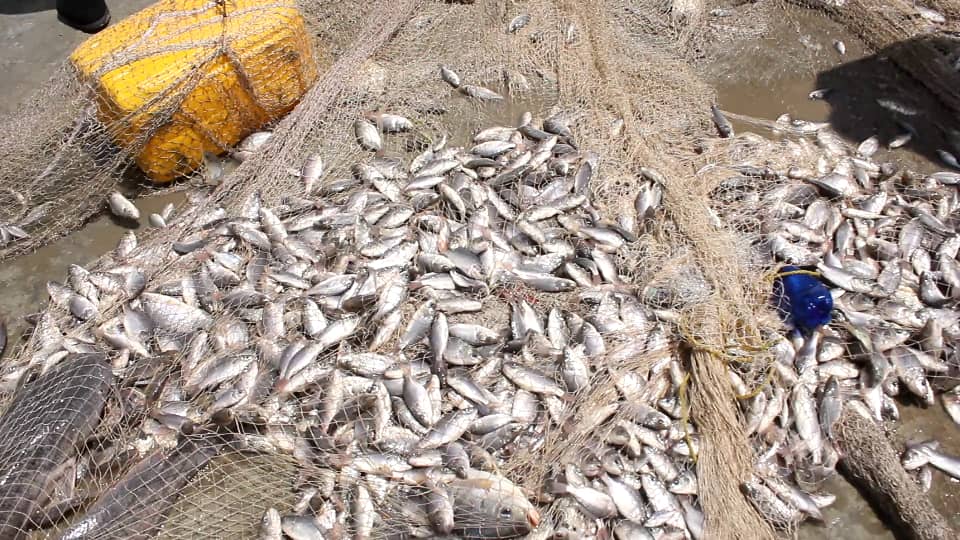 Once a vibrant population, Manyara tilapia, pulled from the depths of Lake Manyara, now face dwindling numbers due to overfishing. Photo: Daniel Samson.
Once a vibrant population, Manyara tilapia, pulled from the depths of Lake Manyara, now face dwindling numbers due to overfishing. Photo: Daniel Samson.
The role of tilapia in the local ecosystem
The Manyara tilapia is not just a fish but an integral part of the lake's ecosystem.
It is crucial in nutrient cycling and serves as a food source for various aquatic organisms. Also, the lake is an attraction site, especially for tourists interested in fishing, birds, and flowers.
According to a Guide to Tanzania Tilapia Fishes released by the Tanzania Fisheries Research Institute in 2018, tilapia fish species are known for controlling certain types of aquatic vegetation.
They feed on algae and submerged plants, helping to maintain a balanced ecosystem by preventing excessive growth of these plants.
Tilapia serve as prey for various predators, including larger fish, birds, and mammals. Their presence contributes to the overall biodiversity of the ecosystem.
Chem Chem Association Project Manager Martin Mun'gon'go says Manyara tilapia, like other tilapia species, is economically important for local communities through aquaculture and fisheries.
"They provide a source of food and income for people in the region," says Mun'gon'go, whose organization provides biodiversity conservation education to people in the Kwakuchinja corridor, where Lake Manyara is part.
Its decline could have cascading effects on the entire lake ecosystem.
What should be done to save Manyara tilapia?
"To date, no efforts have been directed towards ensuring the long-term existence of Manyara Tilapia. This calls for urgent site-specific conservation efforts to safeguard its population," says Dr Mpondo.
Dr Mpondo says the efforts can be achieved through fishery management by engaging in income-generating activities that are environmentally friendly.
Recognizing the urgent need for action, Mohamed Bin Zayed, a species conservationist, has launched a comprehensive conservation program to ensure the long-term viability of this iconic species.
The efforts involve the resurgence of the Manyara tilapia population, including habitat restoration, community engagement, the provision of alternative income activities, and long-term population monitoring.
The organization collaborates with Tanzanian scientists from the University of Dodoma and the Tanzania Forest Research Institute (TAFORI).
Angelamercy Baltazary, an Assistant Lecturer at the University of Dar es Salaam, says advances in the standard fishing gear and establishing a closed season to allow reproduction could increase fish stocks in the lake.
"Quota and total allowable catches can be used to ensure sustainable yields," says Baltazary, a biodiversity expert.
Maintain clean and have good waste management around the lake to avoid sedimentation that leads to a rise in water level and other wastes containing toxins and chemicals that may affect fish stock,” insists Baltazary.
Many fishers of Manyara tilapia acknowledge that there are fewer tilapia than there used to be in Lake Manyara. But there is also much opposition to the possibility of a closed-season draw because it disrupts fishermen's income stream.
"I don't want to see putting a season on the tilapia or banning it," Ole Laltaika said. "The government should put more effort into restricting illegal fishing."
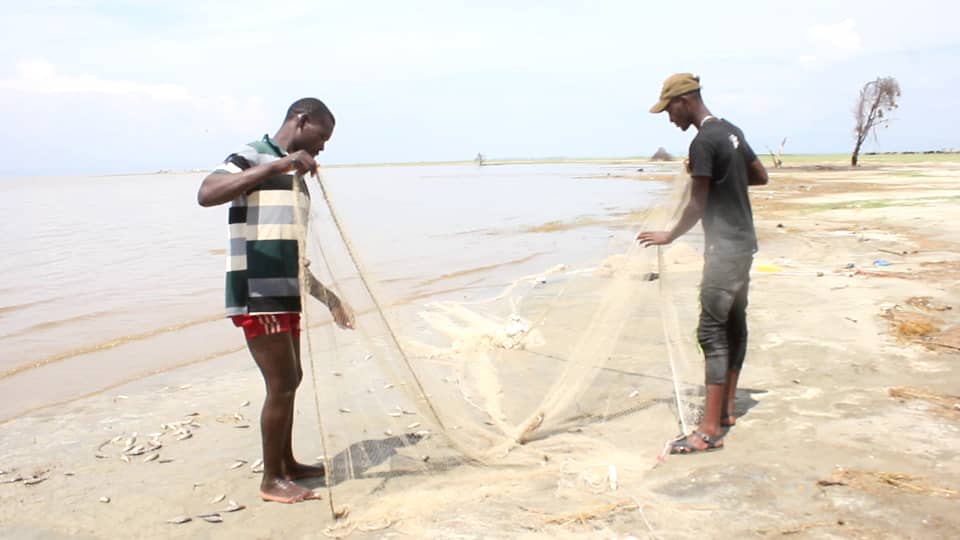 Fishers aknwoldge that the number of tilapia have decreased in Lake Manyara and need sustainable solution to rescue the endangered species. Photo: Daniel Samson.
Fishers aknwoldge that the number of tilapia have decreased in Lake Manyara and need sustainable solution to rescue the endangered species. Photo: Daniel Samson.
Tanzania Fisheries Regulations of 2009 directs fishing activities to stop periodically to relax lakes and increase spawning.
The regulation has been implemented across all lakes in Tanzania, including Lake Victoria, whereby fishermen are not allowed to engage in fishing activities for ten days a month.
This means that the lake is closed for 120 days during the whole year, equivalent to a quarter of a year.
The closed season has helped fish to reproduce in abundance, and fishery experts argue that some fish, like sardines and perch, grow faster compared to the period when the lake is not closed.
A collaborative effort involving the government, local communities, researchers, and non-governmental organizations is essential to implement effective conservation measures.
Aquatic scientist from Nelson Mandela African Institute of Science and Technology (NM-AIST), Dr Gordian Mataba, says education on sustainable utilization of natural resources, including fish stocks in Lake Manyara, needs to be conducted regularly in the villages neighboring the lake.
"Direct or indirect benefits of lake resources need to be clear to the local communities as this may help to reduce the rate of environmental degradation and overfishing and motivate them to conserve the lake and Manyara Tilapia," says Mataba.
The Minister of Livestock and Fisheries, Abdallah Ulega, says the closed fishing season plan is sustainable to control overfishing and ensure aquatic resources are protected and developed.
"In addition to temporarily closing fishing activities, the Government has started implementing alternative ways to enable citizens to develop themselves economically.
"These include lending group boats and cages for fish farming projects and has already allocated 200 million Tanzanian shillings through the Fisheries Research Institute (TAFIRI) to determine suitable areas for breeding,' says Ulega.
According to Mameda, proposed interventions for the Manyara tilapia make sense, though education and guaranteed alternative income during the closed season could be a big game changer. 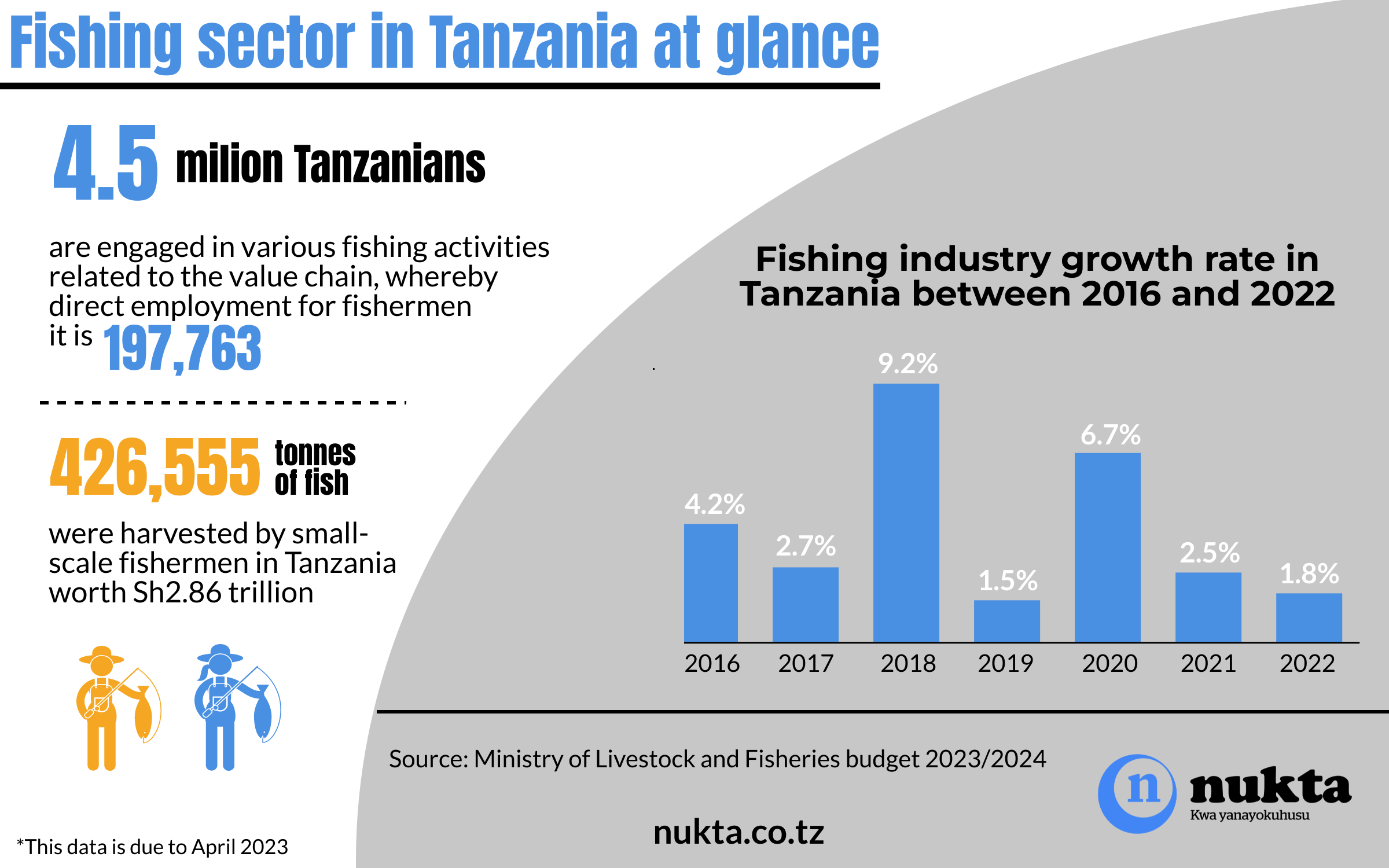
This story has been produced in partnership with InfoNile and with funding from JRS Biodiversity Foundation and IHE Delft’s Water and Development Partnership Programme. It’s a collaborative effort between journalist and scientist, Daniel Samson and Dr Faith Mpondo respectively. Dr Faith Mpondo is a Research Scientist at the University of Dodoma.





